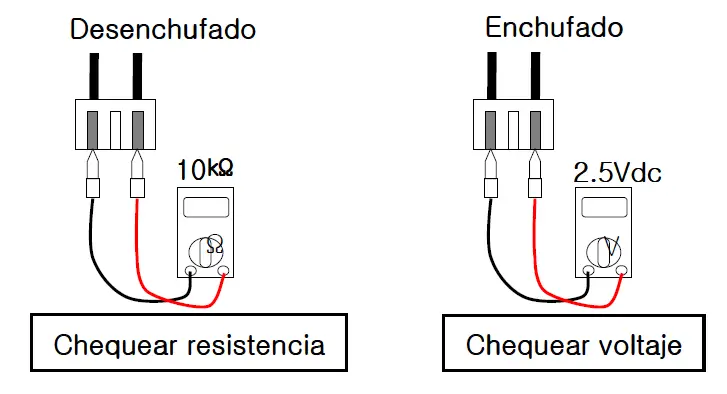In this post, we will delve into the world of temperature sensors in air conditioners, exploring the different types of sensors commonly found and the potential failure codes they can generate. Temperature sensors play a crucial role in maintaining optimal performance in air conditioning systems, and understanding their functions is essential for diagnosing and resolving issues.
Types of Temperature Sensors:
- Local Environment Temperature Sensor:
- Measures the temperature of the air return to assess the overall temperature of the conditioned space.
- Common failure codes: E4, E2, E1.
- Evaporator Temperature Sensor (Well Sensor):
- Monitors the temperature of the evaporator to detect freezing.
- Common failure codes: E3, E5, E2.
- Capacitor Inlet Temperature Sensor:
- Measures the temperature of the air passing through the capacitor.
- Associated failure codes: F1, F6.
- Capacitor Outlet Temperature Sensor:
- Gauges the temperature of the liquid refrigerant leaving the capacitor.
- Common failure code: F2.
- Compressor Discharge Temperature Sensor:
- Monitors the high-pressure refrigerant leaving the compressor.
- Critical for preventing compressor overheating, especially with high-temperature refrigerants like R-32.
- Associated failure codes: F3, F4.
- Suction Line Temperature Sensor:
- Measures the temperature of the refrigerant at the suction of the compressor.
- Aids in controlling overheating and improving system efficiency.
- Failure code: FA.

Diagnosing Temperature Sensor Issues:
Regardless of the type of sensor, the diagnostic process remains consistent:
- Check Sensor Connections:
- Ensure proper sensor connections and clean them if necessary.
- Verify Sensor Position:
- Confirm that the sensor is correctly positioned.
- Measure Electrical Resistance:
- Use a multimeter to measure the electrical resistance of the sensor.
- Compare the reading in kiloohms with the manufacturer’s specifications.
- Verify Power Supply:
- Check the power supply from the card to the sensor.
- Confirm the voltage using a multimeter (around 2.5 volts is typical).
By following these steps, technicians can effectively diagnose sensor issues and address them promptly.
Conclusion: As air conditioning systems evolve with the integration of inverter technology, the number and types of temperature sensors have increased to enhance system control. Regular maintenance, proper diagnostics, and understanding the role of each sensor contribute to the efficient and reliable operation of air conditioning units.
